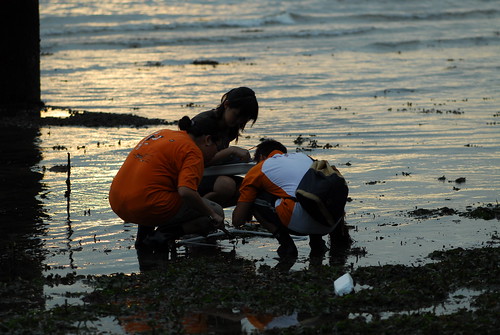In addition to its characteristic crabs and mollusc, Labrador Rocky Shore is a great place to study marine algae. The animal they were most amazed to encounter was of course, the octopus. Happily there was one individual most nights to fascinate students.

Since there are about 100 students in the class each semester, I split them into two sessions of 50 and divide each session into groups of about 10 each. These groups are then spaced out widely along the rocky shore to reduce impact to any one site. We sent the first two batches (last October and February) and have a better idea of what we can achieve with the class and advise to provide about the reports prior to them writing it.
In future years the students will study the community with the use of Simpson's index to contribute to long-term monitoring of the rocky shore. This will mean boning up during the pre-field trip lab session. It will have to be more rigorous exercise than this year with a greater array of specimens of typical fauna from the Raffles Museum so that they have a grasp of identification before the actual field trip. The intention is to contribute to the monitoring of the rocky shore community which NParks has welcomed.

No comments:
Post a Comment